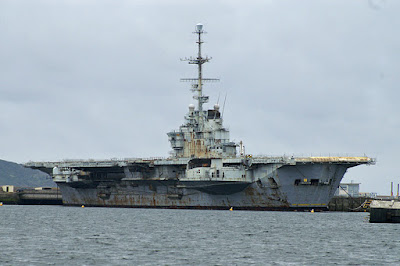Navy ship to be immortalised as artificial reef
NEW DELHI: A decommissioned Indian Navy ship has become part of an environmental project to showcase the country's marine life - offering adventure tourists opportunities for underwater tours of the vessel. The ship, which has been sunk off the Karnataka coast in the Arabian sea, will serve as an artificial reef and over time become a natural home to weeds, sea plants, fishes and other creatures of the sea. The ship, Seaward Defence Boat T-54, had guarded the country's maritime borders for 23 years from the time it was commissioned in September 1982. The 162-tonne vessel, also known as 'The Ever Vigilant', was sunk off Karwar Port January 30. Prior to this, it was brought for "final preparations" to Karwar, where the Indian Navy is developing a major base. The electrical wiring and the communication system were removed from the ship and traces of oil cleaned from the fuel tanks. The ship was then towed out, mines were fitted on the vessel and detonated, causin...


